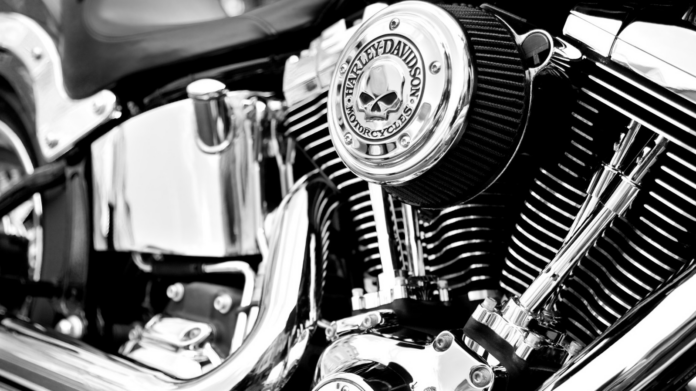Harley-Davidson is one of the most famous and beloved brands on the planet. A dedicated fandom has been buying motorcycles from the Milwaukee-based manufacturer since its inception in 1903. Nearly as old as the internal combustion engine itself, Harley has grown alongside the motorcycle market, inspiring admiration and disdain for its adherence to the V-twin engine.
A common criticism about Harley’s preferred power plant is its failure to keep up with the latest technology. A century of development in motorcycle engines, and it sticks with the same configuration it’s used since 1909? As much as detractors lament the lack of innovation in Harley-Davidson powerplants, the company’s most powerful engines provide a sensory experience that’s hard to find elsewhere. The idiosyncratic detonation cycle, classic Harley engine sound, and torquey power that threatens to pull riders off handlebars are all part of the charm.
Harley celebrated its 120th anniversary year in 2023, and it’s still delivering bikes (and branded goods) all over the planet. Let’s look at a list of some of the best Harley-Davidson engines ever made, examining their reliability, sheer power, longevity, and evolutionary impact on the legendary motorcycle company.
The F-Head is the one that started it all. In 1903, William Harley and Arthur Davidson installed a 24.7 cubic inch single-cylinder engine with 3 horsepower into the first Harley-Davidson ever built. With advice from Ole Evinrude of later outboard motor fame, the partners selected an Inlet Over Exhaust engine, known as an F-Head for the shape of its profile.
The single-cylinder F-Head remained the heart of Harley-Davidsons until 1918, but the nascent company used other configurations as well. An F-Head V-Twin with multiple upgraded components and double the cylinders marked a significant improvement in power and reliability. The 61 ci edition is one of the underappreciated aspects of classic Harley-Davidsons, and it ultimately grew into a 74 ci engine — a displacement Harley used for decades.
Though Harley stuck with its V-Twin strategy come hell or high water, the original F-Head was a launching point. Advancing technology and red-hot competition made it obsolete over time, but anyone who has enjoyed a Harley-Davidson built after 1930 owes a debt of gratitude to the original.
An example of a 1916 Harley-Davidson Model 16F Twin Engine is shown above in a photo from a Bonham’s auction.
Harley-Davidson engineers struck on a winning combination with the flathead engine. Heading into the Great Depression, the once top-of-the-line manufacturer faced stiff competition from the likes of Indian and Excelsior. Engine technology was advancing, but the new overhead valve engines required more metal to produce, thus upping costs.
Harley introduced its 45 cubic inch Flathead engine in 1929, followed by a 74 cubic inch version the following year. Later, an 80 cubic inch version would replace the previous V-series. The Flathead placed the valves in the engine block rather than the cylinder head. Not only was this cheaper to manufacture, but it also proved easier to maintain than more complex overhead valve engines.
Despite the introduction of the Knucklehead in 1936, the Flathead still had a long life ahead. Harley built over 60,000 45 cubic inch flatheads that powered GIs through the battlefields of Europe during World War II, inspiring in many a love for Harley they would take home after the war. The Flathead continued on in the following decades in various Harley-Davidson models despite the rise of overhead valve engines. The last Flathead didn’t leave the factory until 1973 — a lifespan of nearly fifty years.
By today’s standards, the Flathead engine is downright antiquated, but it gets our nod as one of the best Harley motors ever for its simplicity, reliability, and longevity. After all, it’s the longest-produced engine of one of the oldest motorcycle manufacturers in the world.
Speaking of legendary longevity, Harley’s Ironhead engine powered bikes from 1957 to 1985, an impressive run that saw it serve as the main powerplant in the longest-continually produced model in the Harley line: the Sportster, one of the best Harley-Davidson motorcycles ever made.
Harley-Davidson needed a light, powerful motorcycle to compete with the British cafe racers fielded by Triumph, BSA, and Norton in the late 1950s. The Sportster was its answer. Powered by a 55 cubic inch overhead valve Ironhead engine with quad cams and a 7.5:1 compression ratio, the Sportster was the first Harley to create one horsepower for every inch of displacement. The new Sportster model was acclaimed by American motorcycling fans, and Harley didn’t want to mess with success, leaving the Ironhead largely unchanged for 15 years.
For 1972, Harley upped the displacement to 61 cubic inches and increased compression to 9:1, claiming 61 horsepower. Throughout the 1970s, Ironhead Sportsters became a favorite target of modders who customized them into the choppers and bobbers that would become synonymous with the era. The Ironhead could keep up with imports back in the days before the rise of the superbike. Sportsters achieved favored status amongst Harley fans who wanted something less ponderous than the full-sized behemoths.
While the Sportster continues, the last Ironheads were phased out in 1985. Despite claims to the contrary, Harley does look ahead to see how it can continue to perform against the competition, as proven by its adoption of the Ironhead’s replacement, the Evolution Twin, in 1986.
In 1969, American Machine and Foundry (AMF) bought Harley-Davidson. Yes, the maker of bowling pins now had one of America’s foremost automotive brands in its hands. The results were not good. Harley aficionados often lament the AMF years as the darkest period in the brand’s history. After over a decade of flagging reputation, a group of senior executives bought the company out of debt, but it had an uphill battle against claims of poor build quality and reliability. Part of digging itself out of this hole was the introduction of the Evolution Twin (Evo) engine in 1984.
The Ironhead had performed admirably, but the design was rooted in the 1950s, and Japanese bikes were stealing Harley’s thunder in the market. The Evo’s mission was straightforward: Revitalize Harley’s reputation with a modernized take on its V-twin design. The air-cooled Evo utilized aluminum cylinders and heads, reducing wear, improving reliability, and making it significantly lighter than previous engines. Like many classic Harleys, the Ironhead is slowly becoming worth more and more money.
The 1986 Sportster got the new Evo engine — upping the displacement from 1,000 cc to 1,200, setting a trend that would continue for the next couple of decades. Even bigger Evos powered everything from the Softail to baggers, and Harley’s reputation and performance bounced back significantly. The last Evolution-powered Sportster rolled off the factory floor in 2022. It’s safe to say mission accomplished for the engine that staved off bankruptcy for Harley.
Though the Evolution did its job well, Harley eventually decided it would need something else to power the so-called
10 Of The Best Harley-Davidson Engines Ever Made
RELATED ARTICLES



